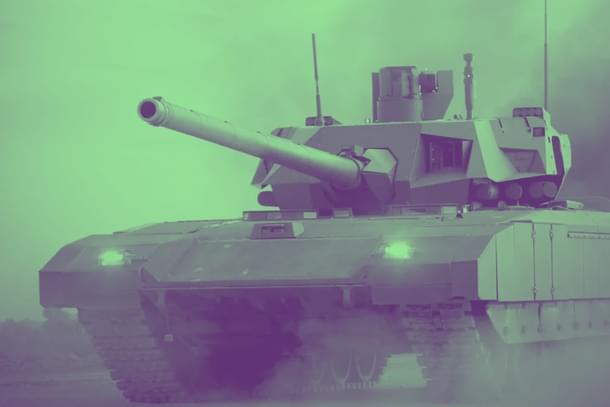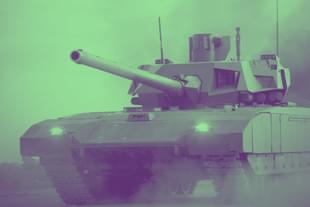Defence
Indian Army's New Tank Project Should Not Suffer The Same Fate As Arjun
Ujjwal Shrotryia
Sep 10, 2024, 03:05 PM | Updated Sep 13, 2024, 06:03 PM IST
Save & read from anywhere!
Bookmark stories for easy access on any device or the Swarajya app.


Last week (on 3 September), India’s next-generation tank — the Future Ready Combat Vehicle (FRCV) — was given the nod by the Ministry of Defence (MoD).
The tank, 1,770 of which are planned to be inducted in three phases starting in early 2030, will replace the Indian Army’s four-decade-old Soviet-origin 2,500-odd T-72 tank and its variants.
If everything goes well, it will be the crowning jewel of Made-in-India products used by the armed forces, just like the Tejas fighter jet is for the Indian Air Force.
It is supposed to be the future of Indian Army’s armoured formations and be India’s answer to the challenges posed by modern warfare.
The futuristic qualitative requirements (QRs) drafted by the army reflect this as well.
The tank is supposed to have an active protection system (APS) for 360° protection from top-attack drones and anti-tank missiles. It should also launch loitering munitions and surveillance drones, as well as have the ability to control drones and unmanned ground vehicles (UGVs) to conduct manned-unmanned teaming (MUM-T) operations.
The next generation tank will also sport new-generation computers, electronic warfare equipment, and jammers.
However, some of its QRs give the impression that the FRCV could face the same issues as the Arjun.
Consider this: The army wants the FRCV to have four crew members but also wants an autoloader.
Typically, in Western-designed tanks (with the exception of France’s Leclerc), all tanks have a four-man crew — a driver, a gunner, a commander, and a loader — which also makes the tanks heavy. Most of these tanks weigh upwards of 60 tonnes.
The autoloader removes the need for a loader altogether and also makes the tank lighter.
The only reason that could explain the need for a new pair of hands is that the army believes the fourth crew member will ease the workload of the remaining three when operating newer systems, such as the electronic warfare system.
However, keeping the weight requirement at 55 tonnes +/- 5 per cent, with an armour rating of 800mm RHA on the frontal aspect and 600mm RHA on the remaining sides — which is typically found in tanks weighing more than 60 tonnes — makes this requirement unrealistic.
In fact, no contemporary tank in the world meets this requirement.
One can either have a lightweight tank with a small footprint, great mobility, and less protection, or a heavy and large tank with extensive armour protection.
Lightweight and heavy protection do not go hand in hand.
Moreover, designing such an ambitious tank is bound to throw up challenges, increasing the chances of delays — something countries with decades of expertise in designing armoured vehicles face.
For example, the Germans failed to produce a working KF-31 Puma infantry fighting vehicle (IFV) and were forced to abandon it in favour of developing another IFV, the KF-41 Lynx.
In the event that the new tank does not meet the QRs — which may very well happen — the project could face delays, leading to small orders or, worse, even direct imports.
After all, this is what happened with the Arjun tank.
Its heavy weight compared to the T-72 and T-90 tanks forced the army to buy only a limited number of Arjun tanks, despite it being vastly superior to both the T-90 and T-72. It beat the T-90 fair and square in a head-to-head comparison held in 2010 at the Pokhran test range.
As there was no economy of scale, localising all parts and components was not viable, forcing the import of systems and subsystems.
This led to the initial lot of Arjun Mk-1s suffering from serviceability issues and non-availability of spare parts.
Reportedly, in 2015, almost 75 per cent of the Arjun Mk-1 fleet was grounded due to a lack of spare parts.
Later, the army proposed some upgrades to address earlier issues with the tank. At least 83 changes were identified, with 15 major ones.
Ironically, this led to an increase in the weight to almost 67 tonnes — the very reason the army did not want the tank to be inducted in large numbers. Even worse, when the new tank, dubbed Arjun Mk-1A, with the upgrades was finally rolled out, the army dilly-dallied in ordering it, citing flimsy reasons like high import content, spare parts scarcity, and the lack of suitable ammunition.
It was only in 2021 that the army, under immense pressure from the MoD, relented and ordered 118 Arjun Mk-1A tanks worth Rs 7,523 crore, with deliveries set to begin in 2024.
Making matters worse, the three-year delay (from 2018 to 2021) in ordering led to the production line for the German 1,400 HP MTU MB 838 Ka-501 V10 diesel engine that powers the tank shutting down, causing further delays of another four years — which is when the prototype of the FRCVs is expected to come out.
All this while, the army imported close to 1,600 T-90 tanks, even when the Russians reneged on their pledge to transfer metallurgical technology for gun barrels and armour plates.
Therefore, to avoid another Arjun repeat, all stakeholders — be it the army, the Defence Ministry, the developing agency, or the production partners — should learn from the mistakes of the Arjun and treat the FRCV as a national project, putting all their energy into making this tank a reality.
Staff Writer at Swarajya. Writes on Indian Military and Defence.




